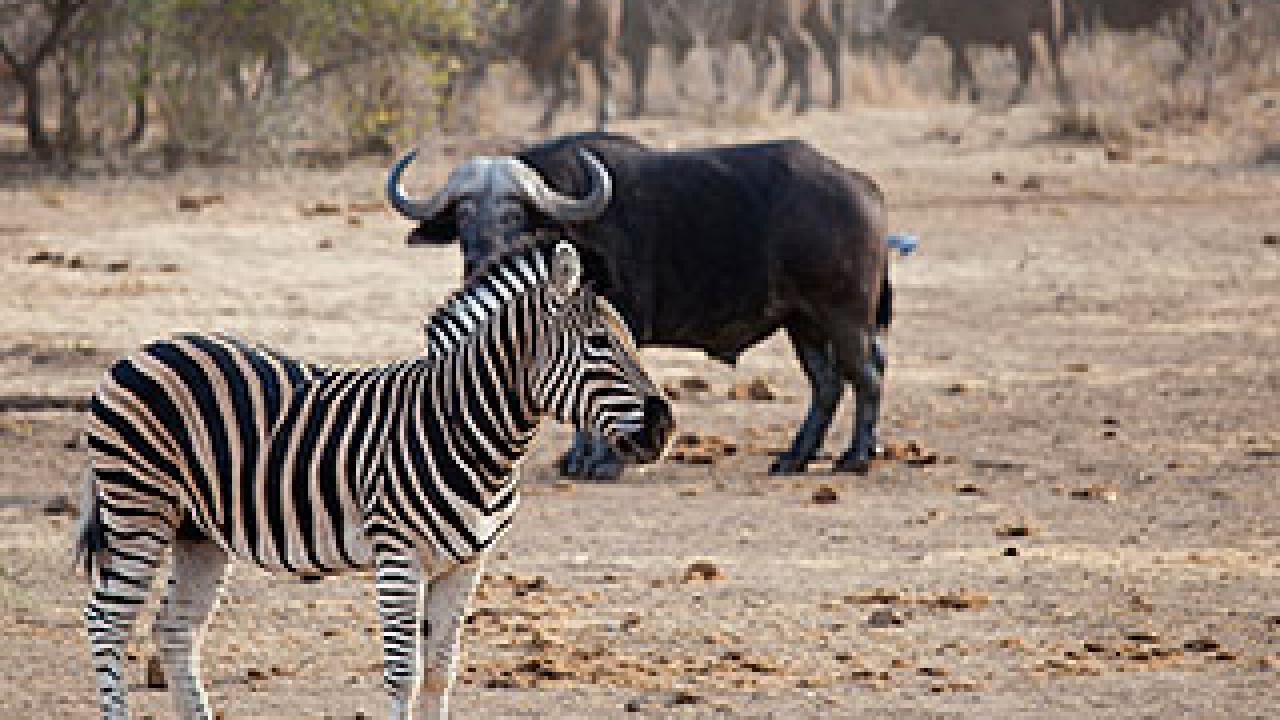In African savannas, when the large animals are away, the mice — and snakes, fleas and ticks — will play.
A new study published today in the journal Bioscience summarizes evidence that the loss of large mammals has cryptic consequences for African savannas and the people and animals that depend on them.
Scientists from Bard College and the University of California, Davis, experimentally removed large grazing mammals from plots of savanna land in Kenya, and a cascade of consequences followed: Populations of a small mammal, the pouched mouse, doubled. The mice attracted venomous snakes like the olive hissing snake, devastated tree seedlings, and doubled the flea and tick populations, which potentially increased the risk of transmission of flea- and tick-borne pathogens.
"The results of this long-term study show that preserving large mammals in African savannas can be a win-win for conservation and for human welfare," said lead author Felicia Keesing, a biology professor at Bard College. "Large mammals like giraffes, zebras, and elephants keep rodents in check, which in turn reduces the number of venomous snakes and the number of fleas that can transmit diseases. Through their effects on rodents, large mammals also increase the survival of tree seedlings."
The study was undertaken at the Kenya Long-term Exclusion Experiment in the Laikipia plateau, a project led by Truman Young, a UC Davis professor and restoration ecologist. For the past 19 years, Young and scientists at KLEE have been experimentally excluding wildlife and livestock from 18 different 10-acre savanna study plots and monitoring the results, gaining important insights into the effects of livestock and wild animals on each other and on rangeland ecology.
African savannas are among the most productive grasslands on Earth and host an abundance of wildlife, including elephants, zebras, lions and leopards. This productivity also makes the savannas attractive to people who want to live there and raise their cattle, sheep and goats. As human populations increase, wildlife needs come into conflict with the needs of people and the livestock they tend.
However, the study shows that careful coordination between the needs for humans and wildlife could benefit both, at least in some cases.
“The relationship between wildlife and livestock is complicated,” Young said. “But the negative impact of wildlife on livestock is often less severe than we’d have guessed, mitigated by the kinds of responses we have seen in the rodents.”
The study received primary funding from the National Science Foundation.
A related study published April 28 in the Proceedings of the National Academy of Sciences and led by Hillary Young at UC Santa Barbara was also conducted at KLEE. It found that declines in large wildlife can increase the risk to humans from rodent-borne disease.
Media Resources
Kat Kerlin, Research news (emphasis on environmental sciences), 530-750-9195, kekerlin@ucdavis.edu
Truman Young, UC Davis Plant Sciences, (530) 754-9925, tpyoung@ucdavis.edu
Felicia Keesing, Bard College, (845) 752-3221, keesing@bard.edu
